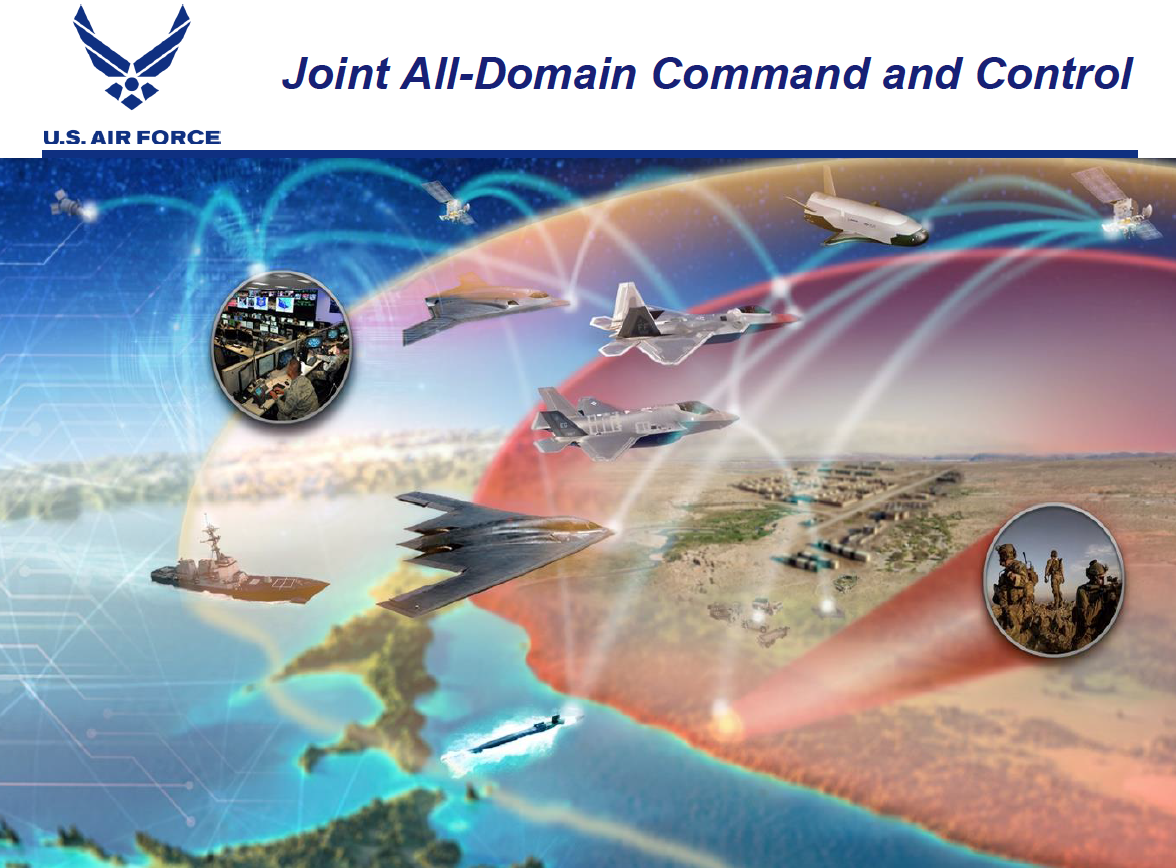
The easiest way to view the Pentagon’s vision of Joint All-Domain Command and Control is to see it as “the internet of warfighting,” similar to the “internet of things” available to every smartphone user, Northrop Grumman’s chief technology officer said Tuesday.
During an American Enterprise Institute event, Scott Stapp said the services and the intelligence community within the Defense Department do not have the ability to communication across their own “cylinders of excellence.”
A shorthand description of JADC2 is getting “the right data to the right shooter,” he added, and also “who actually makes the decision to fire that weapon.”
Marine Maj. Gen. James Adams, deputy director for requirements and capability on the Joint Staff, said, “we don’t have doctrine that [would cover us] globally against an adversary;” the approach now is through the regional combatant commanders.
JADC2 attempts to close that gap at different levels, the panelists said.
In addition, the need for this level of command and control illustrates that it “is more than hardware. It’s people; it’s technology [leveraging from defense industry and the commercial sector]; it’s process and policy,” Adams said.
On the technology side, to meet the JADC2 goals for 2027 Stapp said the thinking must shift from being platform-centric to data-centric. It also recognizes there will be no major new programs between now and 2027. That means “duct-taping and band-aiding” to make progress.
“We have 80 percent of the platforms we’re going to be fighting with 10 years from now” already in the inventory, said Steve Walker, Lockheed Martin’s chief technology officer. But there is still space to look at ways to incorporate smaller systems like unmanned systems to push ahead to truly operating jointly and covering all domains in the future. “JADC2 will allow us to understand data better,” he said.
Adams suggested that a place to start could be having someone from the defense industry, an acquisition specialist and a military person in the same room from the beginning to see how connected they can become as they look “to get something militarily useful” to warfighters as quickly as possible.
Answering a later question, Walker said “we do need an acquisition path” for defense industry and smaller tech firms to make the profits to stay in business. The question they have is, “how is this going to happen” inside the Pentagon and how will it sit with congressional appropriations committees.
It also means understanding the limits of technology now. Stapp used the example of artificial intelligence applied to a specific topic, like winning at the strategy game go but not being able to use that same knowledge to win at checkers or chess.
Industry “can kind of see how it fits together,” Walker said because it works with all the services. This gives the defense industry a bigger picture of what’s available, in addition to what these systems, software and platforms can do.
“The services [and the defense intelligence community] don’t really understand all the tools the others services have” for the warfighter, Stapp added.
While policy “is just paper’ and can be changed relatively easily, Adams said, “there is a workforce issue” in making JADC2 work that would require changing laws.
He said in looking at its contracted force, they are recruited “to fill a specific role,” and the Defense Department needs to win approval on Capitol Hill for that approach to filling its uniform ranks with men and women who have “a real special background,” like in cyber, electronic warfare and artificial intelligence.
These recruits would enter service as O-3s, in the same manner as doctors and lawyers.
Adams said “we’re a ways away from” taking humans out of the decision-making loop. “The human role in war is immutable,” he added.” Adams said he didn’t foresee a time when artificial intelligence and machine learning would supersede commanders in the field. These advances in JADC2 will allow field commanders to make decisions faster and exercise “command control all the way down to the lance corporal [and] up to the commanding general,” he said.





